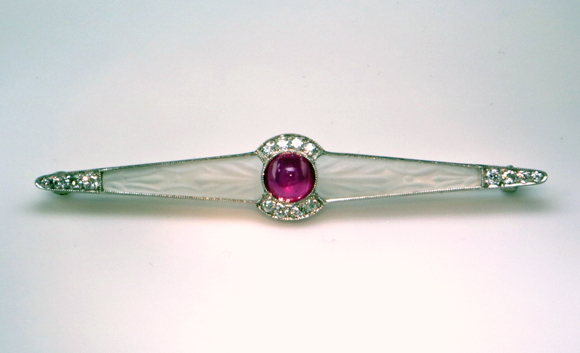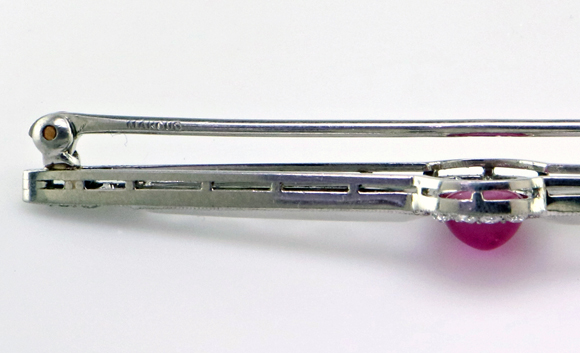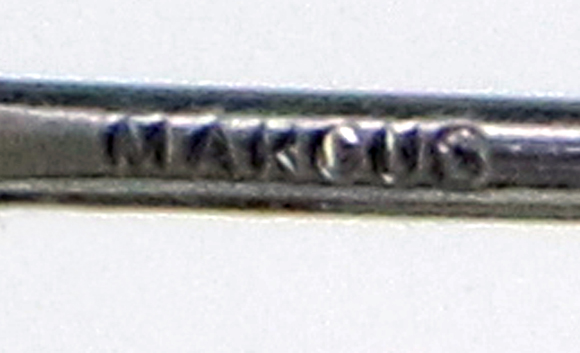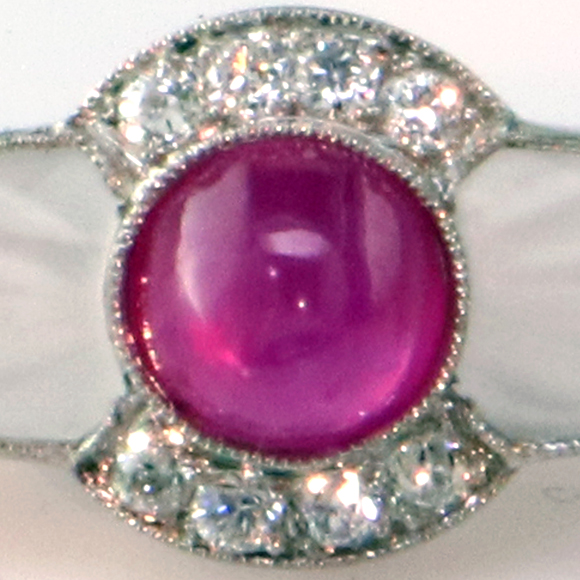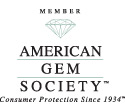Marcus & Company Art Deco Ruby & Diamond Brooch
March 17th, 2018 by James L. Sweaney, CGA, FGA. GGJust acquired: this sweet little Art Deco brooch. During the buy, we noticed a serial or stock number engraved on the back, but didn’t see a quality or maker’s mark. The piece tested to be 14K white gold,and was set with Old European cut diamonds and a fine natural star ruby, so we were happy to to purchase it. Afterwards, examining the pin more carefully, we spotted a maker’s mark on the pin stem– “Marcus.” We purchase vintage and antique jewels by Tiffany, Krementz, T.B. Starr, Whiteside and Blank, and other famous American makers, but this was our first piece by Marcus & Company!
Marcus & Company was one of the elite American jewelry houses. Classically trained in the European apprentice system, Herman Marcus immigrated from Germany to New York in 1850 and started working as a designer at Tiffany & Co. He left Tiffany in 1864 to form a partnership with Theodore B. Starr, Starr & Marcus. After Starr & Marcus dissolved in 1877, Herman Marcus returned to Tiffany. In 1884, he joined the firm of Jaques & Marcus, of which his elder son William Marcus was already a partner. George Jaques retired in 1892 and the firm was renamed Marcus & Company. Herman died in 1899, but his sons continued to run the business well into the 20th century. The firm was sold to Gimbels in 1941 and merged with Black, Starr, and Frost in 1962
Marcus & Company was famous for meticulous craftsmanship, for the use of unusual gemstones and fine enameling and for innovative designs inspired by the French Art Nouveau movement. Marcus & Co. jewelers worked in the Paris workshop of Rene Lalique to learn the art of enameling. Throughout the late 19th and early 20th Century, Marcus & Co. was responsible for some of the most unique jewelry created by an American jewelry house. Marcus & Co. pieces are rare and highly collectible.
The combination of gem materials in this pin is unusual and interesting. The carved and frosted rock crystal quartz flanking the center was in keeping with the “camphor glass” look that was all the rage during the 1930’s. The soft white quartz contrasts nicely with the bright red center, a natural cabochon star ruby. The inclusions in the ruby produce a weak star and prove it to be unheated and from Mogok, Burma. The color is vivid violetish red, known as pigeon’s blood red. Old European cut diamonds finish the ensemble of gems and brighten the look.
Besides being the pinnacle of Art Deco styling, the 1930’s were also the Golden Age of Aviation. This pin reminds me of an airplane propeller. My father learned about airplanes and became a pilot during the 30’s, so this piece goes into my personal collection for a couple of good reasons.
At Mardon, we buy estate jewelry on a daily basis, so we always have new and interesting things to show. If you have jewelry you’d like to sell, please give us a call. We’ll be happy to verbally appraise your items– no fee will be charged if you sell us your items. We buy for cash or trade for store credit. For high value items, we offer consultation and assistance for selling at auctions by Sotheby’s, Christie’s, and other prominent auction houses. We’re open Tuesday through Saturday, 10 am to 5:30 pm– Please call for an appointment.
Tags: Art Deco, Art Nouveau, Burma, Burma ruby, camphor glass, estate jewelry buyer, Marcus & Company, Mogok, pigeon's blood red
